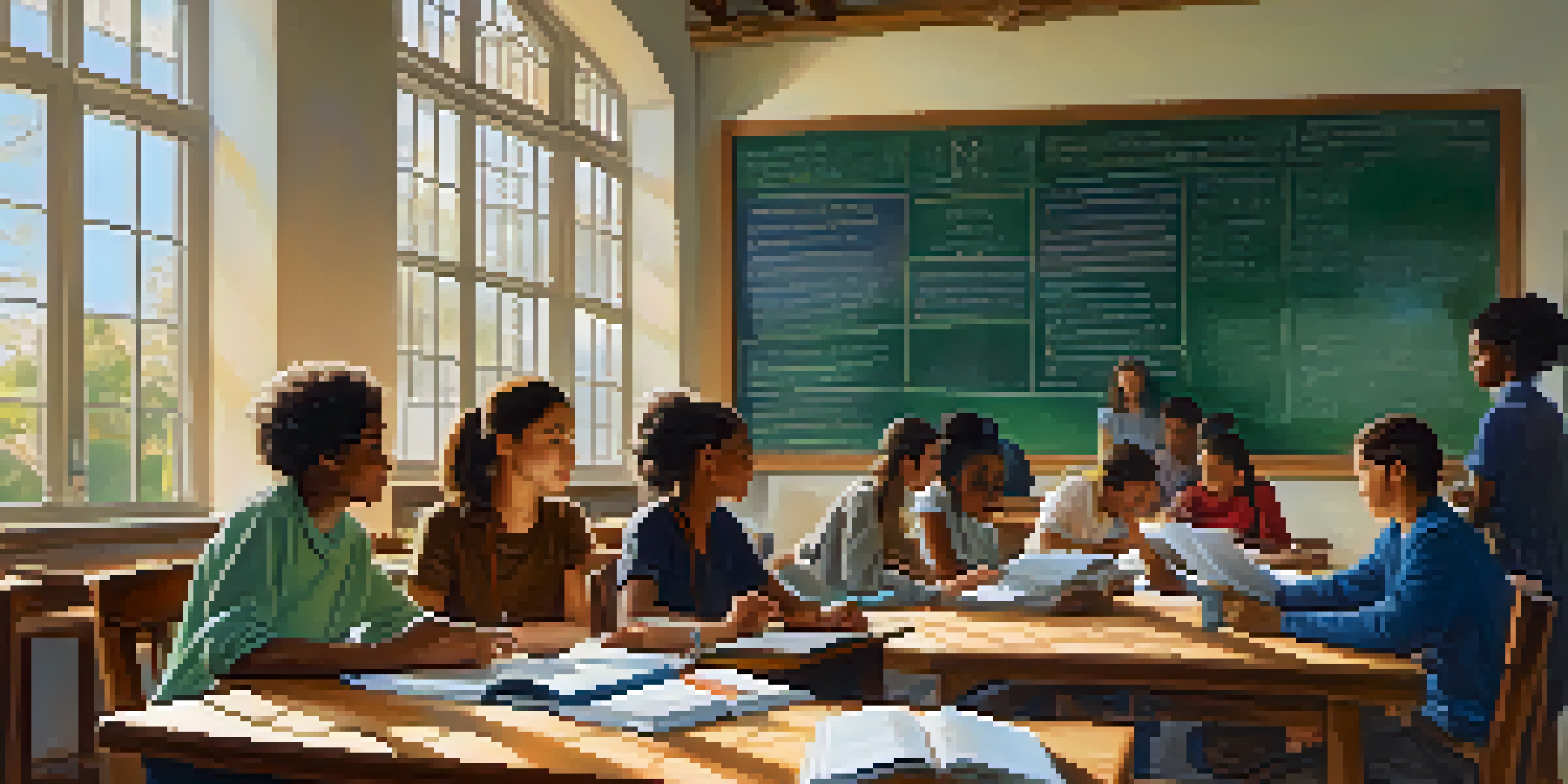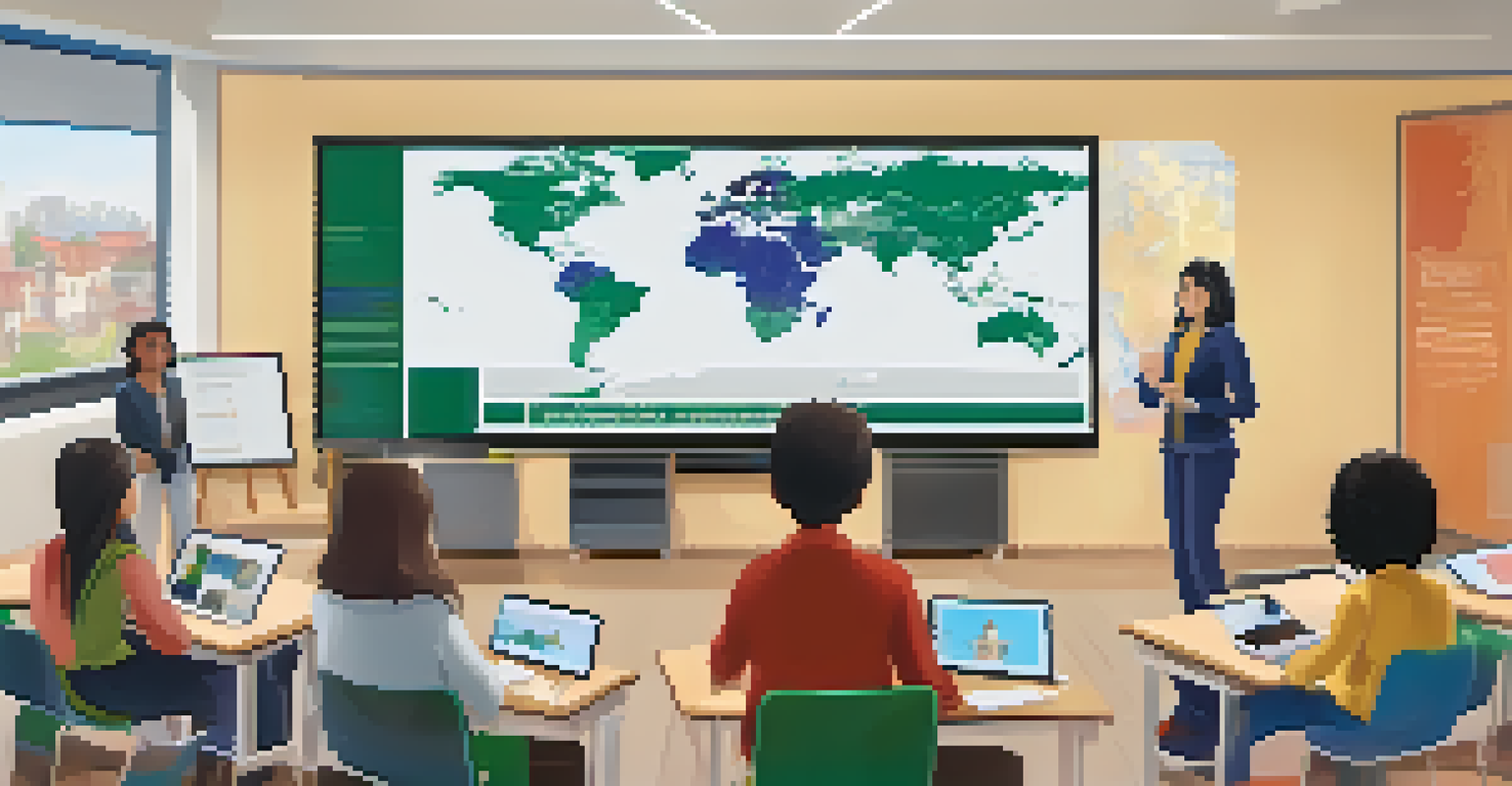OER and International Collaboration in Education

Understanding Open Educational Resources (OER)
Open Educational Resources, or OER, are educational materials that are freely accessible and openly licensed. They can include textbooks, online courses, and even videos, making education more accessible to everyone. Imagine being able to take a college-level course for free, from anywhere in the world—this is the potential of OER.
Open educational resources are the key to unlocking the door to education for all.
At the heart of OER is the idea of sharing knowledge without barriers. This not only democratizes education but also encourages collaboration among educators and learners across different regions. For instance, a teacher in Kenya can access and adapt resources created by educators in Canada, fostering a global exchange of ideas.
Furthermore, OER promotes innovation in teaching methods. By using freely available resources, educators can tailor their lessons to better fit the needs of their students, ultimately enhancing the learning experience. This adaptability is crucial in today's fast-paced educational landscape.
The Role of International Collaboration in Education
International collaboration in education refers to partnerships between institutions across different countries, aimed at sharing knowledge and resources. This cooperation can take many forms, such as joint research projects, exchange programs, or collaborative online courses. Think of it as a global classroom where students from different backgrounds learn together.

Such collaboration enriches the educational experience by exposing students to diverse perspectives and cultures. For instance, a project that connects students from Brazil and Japan allows them to compare their approaches to environmental issues, fostering critical thinking and empathy. This cross-cultural interaction can lead to deeper understanding and appreciation of global challenges.
OER Enhances Global Access to Education
Open Educational Resources (OER) provide free and accessible educational materials, breaking down barriers to learning worldwide.
Moreover, international collaboration can also enhance the quality of education. By pooling resources and expertise, institutions can develop better curricula and teaching methodologies. When educators from various countries work together, they can create more comprehensive and inclusive educational content, benefiting students worldwide.
Benefits of OER in International Education
The integration of OER in international education brings numerous benefits, starting with cost savings. Students around the globe can access high-quality educational materials without the burden of hefty textbook fees. This is particularly beneficial in developing countries where access to traditional educational resources can be limited.
Collaboration and sharing are the foundations of a more equitable education system.
Additionally, OER fosters inclusivity by providing resources that can be adapted for diverse learning needs. For example, a curriculum can be tailored in multiple languages or formats to accommodate students with disabilities. This flexibility ensures that education is not a one-size-fits-all approach.
Lastly, using OER encourages a culture of collaboration among educators. When teachers share their resources, they not only enrich their own teaching but also contribute to a global pool of knowledge. This sense of community can inspire innovation and continuous improvement in teaching practices.
Challenges in Implementing OER Globally
While the benefits of OER are clear, implementing them globally comes with its own set of challenges. One major hurdle is the lack of awareness about OER among educators and institutions. Many educators may not know where to find these resources or how to effectively incorporate them into their teaching.
Another challenge is the varying levels of technological access around the world. In some regions, internet connectivity is limited, making it difficult for students and teachers to access online OER. This digital divide can exacerbate existing inequalities in education, as those without reliable internet access miss out on valuable resources.
International Collaboration Enriches Learning
Partnerships between institutions across countries foster diverse perspectives and improve educational quality through shared resources.
Additionally, issues related to quality assurance can arise. With so many freely available materials, it's essential to ensure that the content is accurate and effective for learning. Educators must navigate this landscape carefully, discerning which resources are reliable and suitable for their students.
Case Studies: Successful OER Initiatives
Several initiatives worldwide have successfully harnessed the power of OER to enhance education. One notable example is the MIT OpenCourseWare project, which allows anyone to access course materials from a wide range of subjects. This initiative has inspired similar projects in other institutions, demonstrating the global potential of OER.
Another example is the African Virtual University, which uses OER to provide quality education across the continent. By offering courses in various fields, this initiative addresses the unique educational needs of African students while promoting collaboration between universities.
These case studies highlight how OER can bridge educational gaps and foster international partnerships. They serve as inspiring models for others looking to implement OER in their own educational contexts.
The Future of OER and International Collaboration
As we look to the future, the potential for OER and international collaboration in education is immense. With advances in technology, we are likely to see even more innovative ways for educators to share resources and collaborate globally. Virtual classrooms and online platforms can facilitate real-time interaction between students and teachers from different countries.
Moreover, the increasing emphasis on lifelong learning means that OER will play a crucial role in professional development for educators. By continually accessing new materials and collaborating with international peers, teachers can stay updated with the latest trends and best practices in their fields.
Challenges Hinder OER Implementation
Despite their benefits, OER face challenges such as lack of awareness, technological disparities, and quality assurance concerns.
In conclusion, the synergy between OER and international collaboration holds the promise of transforming education. By breaking down barriers and fostering a culture of sharing, we can create a more inclusive and equitable educational landscape for all learners.
Getting Involved: How to Contribute to OER Efforts
If you're passionate about education and want to contribute to OER efforts, there are several ways to get involved. One of the simplest ways is to share your own teaching materials under an open license. By doing so, you invite others to use, adapt, and build upon your work, fostering a collaborative spirit.
You can also participate in OER communities and forums where educators share resources and best practices. Engaging with these communities not only helps you find valuable materials but also allows you to connect with like-minded individuals who share your commitment to accessible education.

Lastly, advocating for OER at your institution can make a significant impact. By raising awareness about the benefits of OER and encouraging colleagues to adopt open resources, you can help create a culture of openness and collaboration in education.